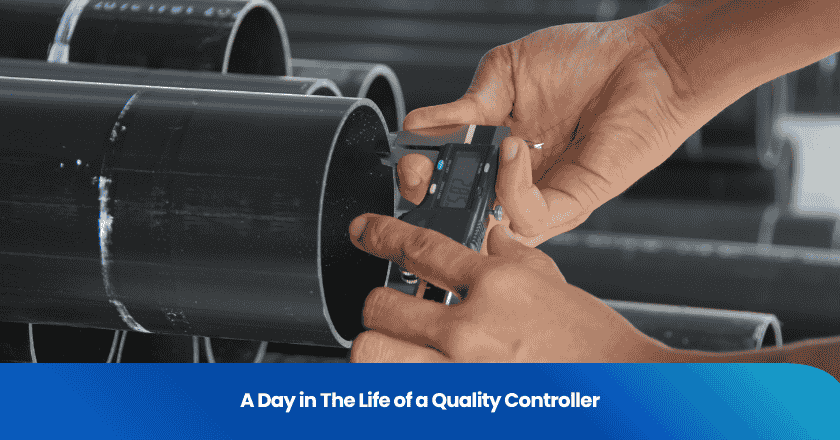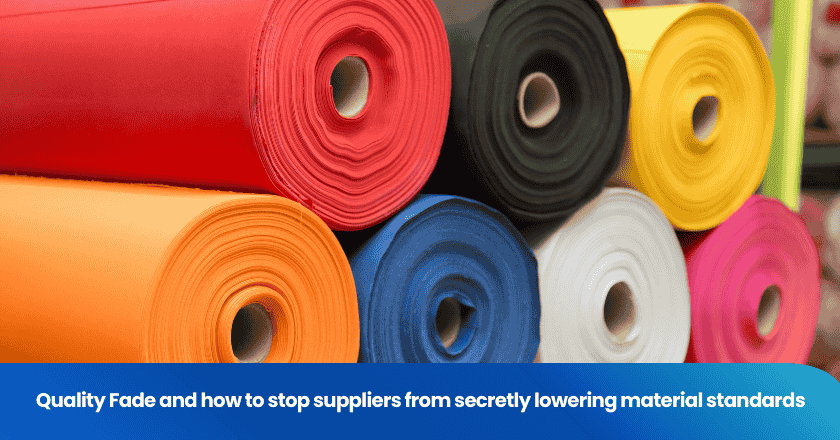
As a quality controller, understanding what does quality controller do is essential to your role in monitoring and overseeing production processes in manufacturing. Your primary responsibility is to ensure quality control at every stage, making certain that products meet strict standards. In manufacturing, knowing what does quality controller do is key to reducing product recalls and costly fines.
Key Takeaways
- Quality controllers ensure products meet strict standards at every production stage, reducing costly recalls and fines.
- Daily tasks include inspecting raw materials, monitoring production, and conducting final checks to maintain high quality.
- Effective communication and teamwork are essential for quality controllers to address issues and improve processes.
- Attention to detail helps identify defects early, saving costs and enhancing product reliability.
- Continuous learning and certifications, like ISO 9001, boost career advancement and job security in quality control.
What Does Quality Controller Do
Quality Controller Responsibilities
When you step into the role of a quality controller, you take on a set of critical tasks that keep manufacturing operations running smoothly. Your main focus centers on what does quality controller do each day: you monitor, inspect, and verify every stage of production to ensure products meet strict quality control standards. You become the gatekeeper for product excellence.
Here is a breakdown of your core quality controller responsibilities:
| Responsibility | Description |
|---|---|
| Testing raw materials | Ensuring that the materials meet quality standards before production begins. |
| Inspecting products during production | Monitoring the quality of products as they are being manufactured. |
| Conducting final checks before shipping | Verifying that the finished products meet all quality expectations. |
You also handle a variety of daily tasks that define what does quality controller do in manufacturing:
- You receive and inspect raw material to confirm it meets specifications.
- You test the product for quality at different production phases.
- You report and record testing metrics and results for traceability.
- You give feedback to quality auditors and the manufacturing floor to drive improvements.
- You stay up to date with standards and protocols to maintain compliance.
- You discard products and batches that fail to meet quality expectations.
Tip: Using quality measurement systems and key performance indicators (KPIs) helps you identify issues early and maintain high product standards. Systematic data collection and quality control checklists guide you through each step, ensuring nothing gets overlooked.
Your role in quality control extends beyond routine checks. You drive ongoing improvement strategies, helping your team enhance product quality and reduce waste. The responsibilities of quality control require you to remain vigilant, detail-oriented, and proactive every day.
Work Environments
As a quality controller, you find yourself in diverse manufacturing settings. Your work environment shapes what does quality controller do and how you approach quality control. You might work in a pharmaceutical facility, where you focus on maintaining cleanroom conditions and testing each batch for potency and purity. In contrast, an automotive plant requires you to inspect finished vehicles for defects and participate in supplier audits.
Here is a comparison of work environments in two major industries:
| Aspect | Pharmaceutical Industry | Automotive Industry |
|---|---|---|
| Quality Assurance (QA) | Creating protocols to maintain cleanroom conditions | Focuses on supplier audits and process design |
| Quality Control (QC) | Testing each batch for potency and purity | Inspects finished vehicles for defects |
In pharmaceutical manufacturing, you follow strict protocols to ensure product safety and efficacy. You spend much of your time in controlled environments, wearing protective gear and documenting every step. In automotive manufacturing, you move between the production line and inspection stations, using specialized tools to check for mechanical and cosmetic flaws.
No matter the industry, you play a vital role in quality control. You adapt to different standards, equipment, and workflows. Your ability to adjust to various environments ensures that you meet the high expectations set for quality controller duties. You help your organization avoid costly recalls and maintain a reputation for excellence.
By understanding what does quality controller do in each setting, you prepare yourself for the unique challenges and rewards that come with this essential role in manufacturing.
Daily Tasks in Quality Control
Inspection and Testing
You start your day as a quality controller by focusing on inspection and testing. You play a crucial role in quality control in manufacturing by ensuring every product meets strict standards. Your routine involves several inspection methods that help maintain product quality:
1. Pre-Production Inspection: You check raw materials before production begins.
2. In-Process Inspection: You monitor products during manufacturing to catch issues early.
3. Final Product Inspection: You verify finished goods before they leave the facility.
4. Sampling Inspection: You select random samples for detailed analysis.
5. Continuous Inspection: You perform ongoing checks throughout the production process.
6. Specialized Techniques: You use advanced tools for specific testing needs.
You might use calipers to measure dimensions or run chemical tests to confirm material composition. These steps form the backbone of quality control in manufacturing, helping you identify defects before they reach customers.
Documentation and Reporting
Accurate records are essential for quality control. As a quality controller, you document every inspection and test. You create quality control reports that track each stage of manufacturing. Your reports include:
- Inspection details such as date, time, and inspector’s name.
- Product information like batch numbers and item codes.
- Checklists and criteria used during assessment.
- Observations and findings, including any deviations from standards.
- Non-conformance details with severity levels.
- Visual evidence such as photos or diagrams.
- Recommended corrective actions.
- Signatures to confirm completion.
You use these records to support regulatory compliance, supplier evaluations, and customer complaint investigations. Quality monitoring relies on your thorough documentation to maintain high standards in manufacturing.
Collaboration in Production
You do not work alone. Quality control in manufacturing depends on teamwork. You collaborate with production teams to promote accountability and share knowledge. You assign tasks, encourage cross-functional cooperation, and help identify risks early. Regular meetings and feedback sessions allow you to address issues quickly and improve efficiency. By working together, you and your team reduce errors and ensure that every product meets quality expectations.
Note: Your daily efforts in quality control directly impact product standards. You help set protocols for incoming material inspection, in-process testing, and final product verification. You also ensure equipment calibration and measurement tolerances stay within required limits. This attention to detail keeps manufacturing operations running smoothly and upholds the reputation of your organization.
Skills for Quality Controllers
Technical Skills
As a quality controller in manufacturing, you rely on a strong set of technical skills to maintain high standards. You must understand how to operate advanced tools and automated machines that support quality control. You also need to interpret data and test results to verify product specifications. Staying current with industry standards such as ISO 9001 and Six Sigma helps you ensure compliance and improve quality processes. You often attend industry conferences, subscribe to journals, and participate in professional networks to keep your knowledge up to date. Ongoing training programs, including courses on statistical process control and the seven basic quality control tools, help you sharpen your expertise.
| Skill Type | Description |
|---|---|
| Technological Aptitude | Familiarity with advanced tools and technologies used in quality control, such as automated machines. |
| Understanding of Standards | Knowledge of industry standards like ISO 9001 and Six Sigma to ensure compliance and quality. |
| Strong Analytical Abilities | Ability to analyze data and test results to identify trends and ensure product specifications are met. |
Attention to Detail
You must pay close attention to detail as a quality controller. This skill allows you to spot even the smallest flaws during inspections, which can prevent major issues later in production. You conduct dimensional, visual, and functional inspections with accuracy, ensuring that every product meets strict requirements. Careful inspections help you identify defects at different stages, saving costs on rework and materials. Your focus on detail also reduces inventory problems and minimizes returns, which supports efficient manufacturing and reliable quality processes.
- Detect small flaws that could cause significant problems.
- Conduct accurate inspections for dimensions, appearance, and function.
- Identify defects early to save costs and reduce waste.
- Minimize inventory issues and returns through thorough checks.
Communication
Effective communication is essential for every quality controller. You must report findings in a way that makes sense to managers and team members who were not present during audits. Clear, factual, and actionable audit reports help you highlight both conformities and non-conformities, using specific examples. You create timelines for addressing issues and assign responsibilities to the right people. You also develop procedures, train users, and encourage staff to participate in quality processes. Maintaining strong relationships with suppliers, customers, and regulatory entities ensures smooth operations in manufacturing. Your leadership helps drive corrective and preventive actions, supporting continuous improvement in quality control.
- Make reports understandable for all stakeholders.
- Communicate findings to avoid audit failures.
- Develop and train staff on procedures.
- Foster collaboration with suppliers and customers.
- Assign clear responsibilities and create timelines for corrective actions.
Tip: You improve your effectiveness as a quality controller by combining technical expertise, attention to detail, and strong communication. These skills help you maintain high standards in manufacturing and support robust quality processes.
Challenges and Impact
Common Challenges
As a quality controller, you face several obstacles in the manufacturing environment. You must address variability in raw materials, which can disrupt the manufacturing quality control process and affect product consistency. You often encounter time constraints, especially when production deadlines approach. These pressures can tempt teams to skip essential quality checks, risking safety and increasing the chance of recalls.
You also deal with resistance to process changes. Employees may hesitate to adopt new procedures, fearing disruption or extra workload. You can overcome this by involving team members in decision-making and encouraging ownership of improvements. Communicating the long-term benefits of Kaizen, such as job security and career growth, helps build support. Incentives and recognition programs motivate participation and foster a culture of continuous improvement.
You must establish clear communication channels to inform employees about changes and implementation plans. Addressing questions and resolving concerns about new processes improves acceptance. Identifying unofficial leaders within your team can help spread positive messages and encourage others to embrace change. Support from management, along with training programs and workshops, assists employees in adapting to new quality control measures.
- Inadequate quality checks can result in poor products reaching customers.
- Variability in raw materials requires strict supplier evaluation.
- Maintaining consistency in high-volume manufacturing demands advanced techniques.
- Time constraints can compromise quality assurance.
- Employee resistance to change can slow down improvements.
Importance of Quality Control
You play a vital role in the quality control department, ensuring that every product meets high standards. The importance of manufacturing quality control extends beyond preventing defects. Effective quality control reduces operational costs and protects your company's reputation. True quality-related costs can account for 15% to 20% of sales revenue, and in some cases, reach up to 40% of total operations. By investing in prevention and appraisal, you minimize internal and external failure costs.
| Component | Description |
|---|---|
| Prevention | Investments made to avoid defects and failures, leading to reduced costs in the long run. |
| Appraisal | Costs associated with measuring and monitoring quality to ensure standards are met. |
| Internal Failures | Costs incurred from defects found before delivery to customers, which can be minimized through quality control. |
| External Failures | Costs arising from defects found after delivery, impacting customer satisfaction and company reputation. |
Quality control in manufacturing also enhances customer satisfaction. Consistency in product quality builds trust and loyalty. Early problem resolution improves product reliability and helps customers find solutions quickly. A better user experience leads to repeat business and positive reviews.
You benefit from end-to-end visibility in tracking quality data across the supply chain. Enhanced traceability reduces liability risks and enables faster recalls, ensuring customer safety. By maintaining robust quality control, you support compliance with industry regulations and uphold your organization's reputation.
Note: Ineffective quality control can lead to significant costs due to recalls, waste, and damage to reputation. Your commitment as a quality controller ensures high standards and long-term satisfaction for both your company and its customers.
Career Path in Quality Control
Entry Requirements
You can start your journey in a quality controller job with a range of educational backgrounds. Most employers look for candidates with a high school diploma, technical diploma, or an associate degree. Some positions may require a bachelor’s degree in engineering, manufacturing, or a related field. The following table outlines typical entry requirements for a quality controller job:
| Requirement Type | Details |
|---|---|
| Education | High school diploma, technical diploma, associate degree, or bachelor’s degree in engineering, manufacturing, or related field. |
| Certifications | Certified Quality Inspector (CQI), Certified Welding Inspector (CWI), Nondestructive Testing (NDT) Certifications. |
| Skills | Attention to detail, analytical thinking, problem-solving abilities, effective communication skills. Familiarity with ISO 9001, Six Sigma, and safety regulations. |
You often gain experience through on-the-job training or short-term courses. Many quality control inspectors begin with entry-level roles and build expertise over time. Earning certifications such as ISO 9001 or Six Sigma can boost your marketability and job security. Employers value these credentials because they show your commitment to quality management.
Tip: Certifications like ISO 9001 not only help you stand out but also open doors to leadership roles and higher salaries.
 Learn more Quality Inspection Standard
Learn more Quality Inspection Standard
Advancement Opportunities
As you gain experience in a quality controller job, you unlock many advancement opportunities. You can pursue continuous education to stay updated with industry trends and new quality management techniques. Developing leadership skills and joining professional associations will help you connect with industry leaders.
You may progress through the following career stages:
- Move from junior roles to senior specialist or manager positions within 5-7 years.
- Transition into roles such as Quality Assurance Manager, Director of Assurance, or even Chief Excellence Officer.
- Take on consultancy roles to guide other organizations in improving their quality control systems.
You can also lead teams, develop testing protocols, and influence strategic quality policies. The demand for skilled quality controllers continues to grow as manufacturing adopts new technologies and faces increasing regulatory scrutiny. Your dedication to learning and professional development will shape your long-term success in this field.
You drive product excellence and business success as a quality controller. Your daily work shapes company reputation and customer loyalty.
| Role Importance | Collaboration | Adaptation | Performance Metrics |
|---|---|---|---|
| You ensure products meet standards, building trust. | You work with teams to solve issues. | You embrace new technologies for better results. | You track defect rates and satisfaction scores. |
If you seek a career with meaningful tasks, fair compensation, and growth opportunities, quality control offers strong job satisfaction. You can attract new talent by sharing authentic experiences and promoting a positive work environment. Your dedication makes a lasting impact—embrace the challenge and enjoy the rewards of this vital profession.
FAQ
What qualifications do you need to become a quality controller?
You need a high school diploma or technical degree. Some employers prefer candidates with certifications like CQI or experience in manufacturing. You can improve your chances by learning industry standards and gaining hands-on training.
How does a quality controller handle product defects?
You identify defects during inspections. You record the issue, remove the defective item, and report findings to your team. You help implement corrective actions to prevent future problems.
What tools do you use for quality control?
You use calipers, micrometers, and automated testing machines. You also rely on checklists, data analysis software, and visual inspection tools. These resources help you maintain product standards.
How do you communicate quality issues to your team?
You share clear reports and hold regular meetings. You use visual aids and direct feedback to explain problems. You assign tasks and set deadlines for corrective actions.
What industries employ quality controllers?
You find quality controllers in manufacturing, pharmaceuticals, automotive, food production, and electronics. You play a key role in any industry that values product consistency and safety.
Grow your business with TradeAider Service
Click the button below to directly enter the TradeAider Service System. The simple steps from booking and payment to receiving reports are easy to operate.



